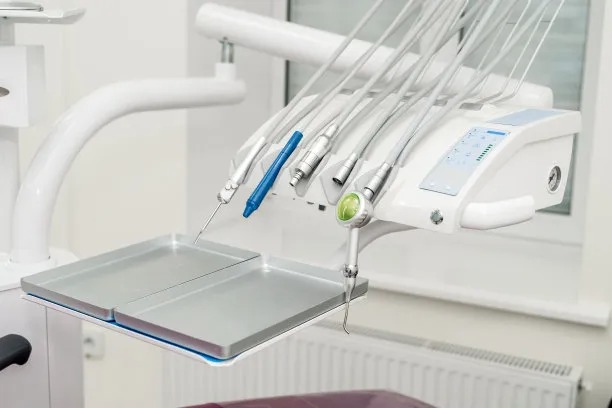The Complete Guide to Extracting a Tooth Safely and Effectively for Optimal Oral Health
Summary: Extracting a tooth can be a daunting procedure, but understanding the right techniques and approaches can enhance safety and effectiveness. This comprehensive guide explores essential aspects of tooth extraction, including preparation, procedural techniques, post-extraction care, and potential complications. Emphasizing optimal oral health, it aims to equip readers with knowledge on when to consult a professional, the factors involved in tooth extraction, and the best practices to follow for a smooth recovery. With the right information, patients can face tooth extractions with confidence and ensure their oral health is prioritized.
1. Preparation Before Tooth Extraction

Before a tooth extraction, adequate preparation is crucial for ensuring a successful procedure. First, patients should have a thorough dental assessment conducted by a qualified dentist. This assessment includes X-rays to evaluate the tooths position and any surrounding structures, as well as discussing the patients medical history. Understanding any underlying conditions is vital, as these may affect the extraction process or healing time.
Additionally, patients should discuss their medications with the dentist. Certain medications, such as blood thinners, can increase the risk of complications during and after the extraction. Patients may be instructed to cease taking these medications temporarily or follow specific guidelines to minimize risks.
Finally, emotional and mental preparation is also important. Understanding what to expect during the procedure can ease anxiety and promote a more positive experience. Patients are encouraged to ask questions and express any concerns they might have prior to the appointment.
2. Safe and Effective Extraction Techniques
Once the preparation phase is complete, the extraction procedure itself must be approached with proficiency. Dentists employ various techniques depending on the tooths condition—simple extractions for visible teeth and surgical extractions for those that are impacted or require more complex removal.
Local anesthesia is typically administered to numb the area around the tooth. This ensures that the patient remains comfortable during the procedure. In some cases, sedation may also be offered to help reduce anxiety and pain perception. The dentists choice of anesthesia largely depends on the complexity of the extraction and the patients comfort level.
Once numbness is ensured, the dentist can begin the extraction process. This involves using specialized instruments to loosen the tooth from its socket. Proper technique minimizes damage to surrounding tissues, ensuring a smoother recovery. After the tooth is removed, gauze is usually placed over the extraction site to control bleeding and promote clot formation.
3. Post-Extraction Care Guidelines
Post-extraction care is vital for a smooth healing process and minimizing complications. After the extraction, patients are usually advised to avoid vigorous physical activity and refrain from spitting or using a straw for at least 24 hours, as these actions may dislodge the blood clot that forms in the extraction site.
Patients should adhere to a soft-food diet in the days following the procedure. Soft foods like yogurt, mashed potatoes, and smoothies help avoid irritation to the extraction site while allowing for proper nourishment. Maintaining hydration is also important, but care should be taken to consume liquids gently.
Furthermore, maintaining oral hygiene is crucial during recovery. Patients are encouraged to rinse their mouths gently with warm salt water after the first 24 hours to reduce the risk of infection. Its essential to avoid brushing the extraction site directly until healing is well underway.
4. Recognizing and Managing Complications
Despite careful planning and execution, complications may sometimes arise following a tooth extraction. Patients should be aware of potential issues, such as excessive bleeding, pain that worsens after several days, or signs of infection, including fever or swelling. Recognizing these symptoms early can be key in seeking timely medical assistance.
Dry socket is another common complication in which the blood clot fails to form or becomes dislodged, exposing the bone beneath. This condition can be quite painful and may require a follow-up visit to manage symptoms and promote recovery.
In more severe cases, nerve damage or sinus perforation can occur, particularly with upper tooth extractions. If any unusual symptoms occur post-extraction, its critical to consult a dentist immediately for intervention and care.
Summary:
In conclusion, extracting a tooth safely and effectively involves a well-rounded understanding of preparation, execution, aftercare, and potential complications. By adhering to established protocols and guidelines, patients can ensure a more comfortable experience and optimal oral health moving forward. Understanding these key aspects not only prepares individuals for tooth extractions but also fosters confidence in managing their oral health.
This article is compiled by Vickong Dental and the content is for reference only


